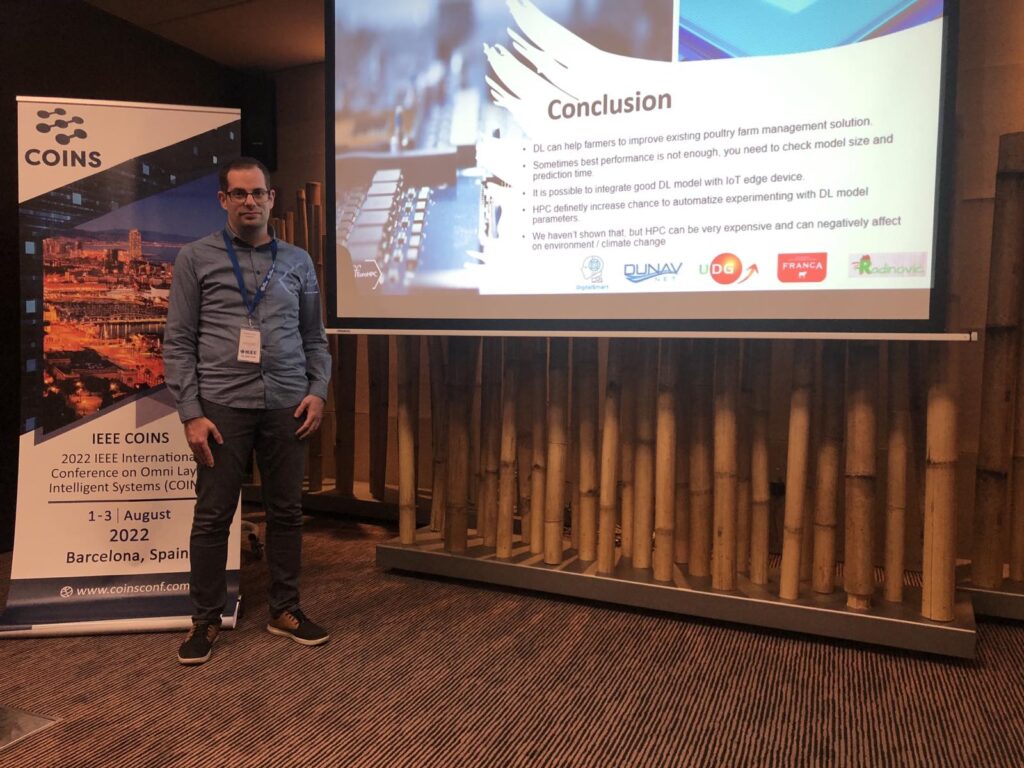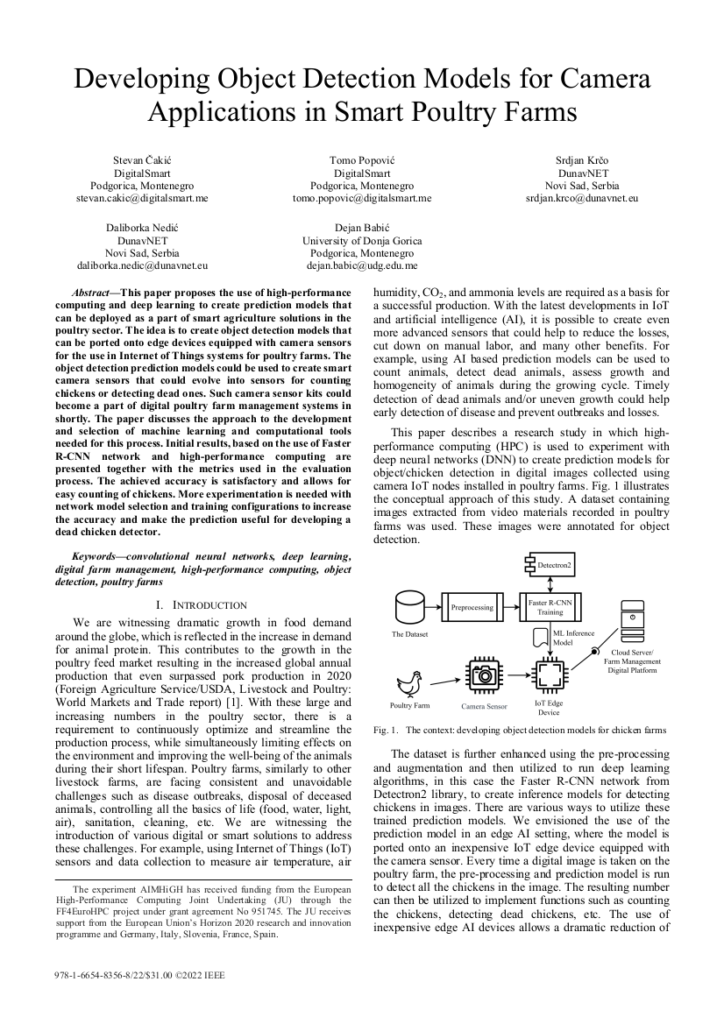Researchers from EuroCC Montenegro presented two papers at the IEEE International Conference on Omni-Layer Intelligent Systems (COINS). IEEE COINS (link) is the right place to be. IEEE COINS brings together experts in Digital Transformation (from AI and IoT to Cloud, Blockchain, Cybersecurity, and Robotics) from around the globe. IEEE COINS includes a multi-disciplinary program from technical research papers, to panels, workshops, and tutorials on the latest technology developments and innovations addressing all important aspects of the IoT & AI ecosystem. The conference took place 1-3 August in Barcelona.
This paper was a result of the collaboration on FF4EuroHPC application experiment project called AIMHiGH that focuses on computer vision and the use of HPC to develop object detection prediction models for the use in smart agriculture, more specifically in the poultry sector. The title of the paper is “Developing Object Detection Models for Camera Applications in Smart Poultry Farms”.
ABSTRACT – This paper proposes the use of high-performance computing and deep learning to create prediction models that can be deployed as a part of smart agriculture solutions in the poultry sector. The idea is to create object detection models that can be ported onto edge devices equipped with camera sensors for the use in Internet of Things systems for poultry farms. The object detection prediction models could be used to create smart camera sensors that could evolve into sensors for counting chickens or detecting dead ones. Such camera sensor kits could become a part of digital poultry farm management systems in shortly. The paper discusses the approach to the development and selection of machine learning and computational tools needed for this process. Initial results, based on the use of Faster R-CNN network and high-performance computing are presented together with the metrics used in the evaluation process. The achieved accuracy is satisfactory and allows for easy counting of chickens. More experimentation is needed with network model selection and training configurations to increase the accuracy and make the prediction useful for developing a dead chicken detector. (link)



